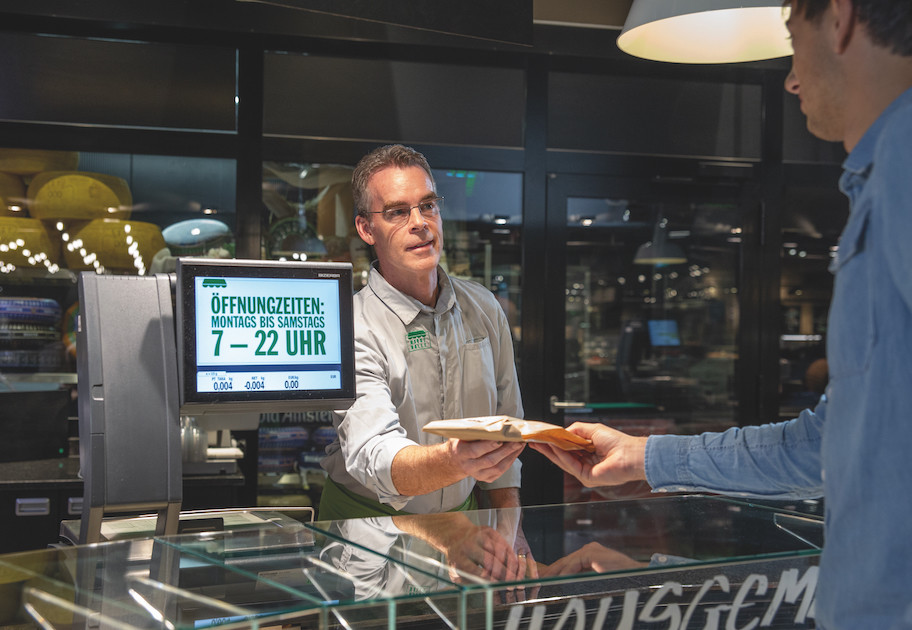Apart from the choice of media that head office communicates with, the content of the messages may not necessarily match the needs of the staff. There is often no feedback possible, which means that head office has insufficient knowledge of how the communication was experienced. Digital solutions such as the InTouch app are efficient ways of stimulating interaction between staff and head office.
The format of the store competition is essential
Head office often focuses on the winners. Of course, this is to congratulate them: the employees are often met personally and their achievement is highlighted. On the other hand, it is also the smallest group - a group that is often already doing well, which is why they won in the first place. The biggest potential benefit for head office actually lies in the losers.
The biggest problem with the store competition as an elimination race is staff motivation. This format for the entire competition could therefore also be one of the main reasons for the decline in motivation after elimination and the focus that head office has on the the stores that are still participating.
The longer that branches remain in the race, the longer they stay motivated.
Top down versus bottom up
In all cases, the store competition is organised hierarchically. Head office determines what the competition will look like, which they pass on to the area managers who then communicate it to supermarket managers. It is the supermarket manager who has to motivate the store staff and thus has a major impact on the performance of the branch.
The store competition is part of the change in mentality regarding the importance of staff. This tool helps to motivate staff and to demonstrate how important head office considers them. On the other hand, the competition is deployed top-down. Employees are not asked what they think is good or bad. Flat structures that work from a bottom-up principle are better suited to the new generations of employees, creating new ideas, activities and products in the workplace.
Statistics and the goals of teams and individuals should be shared with everyone and not just with the relevant managers. The sense of responsibility that this can create is crucial to the effectiveness of the entire team.
The success factors for a store competition
From the large-scale survey conducted by Kega, four essential points for improvement have emerged that would make the store competition even more effective. It is important in this respect to say that having or using an interactive tool such as the InTouch app is essential.
An interactive app ensures that you can show the store rankings at any time of the day and that there is a direct communication opportunity from both head office to staff and staff to head office. This enormously increases engagement for all parties.
It starts with all the shop staff knowing exactly what the competition consists of, what is expected of them and whether they are on the right track regardless of what the management does with it. This directly tackles the problem of busy branch managers who give sales more priority than the store competition. Of course, the prize package will also have to be attractive, but we are not focusing on this for now. However, a poll could already help by asking the staff themselves what they would like to win.
Motivate by setting goals
Agree realistic goals for the store or for specific departments and share them. Examples might include the best special offer presentation in week x for the ladies' department or that the number of empty shelves remains below the norm in month y.
Setting specific goals increases the motivation of employees. It is important that they are involved by making them jointly responsible for setting, implementing and realising these goals. In addition to winning the final or the match, goals can also be set for gaining points or achieving a certain number of positive customer ratings.
You could also look at setting personal goals to motivate and reward employees at an individual level.
Monitoring progress
Employees often have very little insight into the progress of their own store and the progress of the store competition. A scoreboard showing the current position of your store is a step in the right direction but does not motivate enough. It is important that employees know what they are being tested on, what exactly is expected of them, and how they can improve. The best thing would be to provide clear, specific feedback per department. This way, every employee sees at a glance how it looks collectively and individually and what can be done better.
This gives a broader perspective of what needs to be worked on and in turn creates the necessary motivation to achieve the desired goals. At the same time, it reduces the gap between management and shop staff.
In such an overview, it would be a very valuable addition to make a direct comparison with the retailer's other branches. This would enable you to see how your score compares to others. This would give all the non-leaders the motivation to step up a gear.
Action points for improvement
Staff that were spoken to in the survey almost unanimously said they need to get specific action points based on objectives and feedback that can be translated into concrete assignments with tips & tricks.
This gives the employee a clear framework for how well they should work and what is expected of them. The framework helps to keep the optimum level constant. This list of action points should be presented as a check-list that makes it easy for staff to keep up to date with their tasks.
In order to get the message across clearly to the staff, we highly recommend presenting the tips & tricks for improved performance visually in the form of an animation or video. It makes it all very clear for the staff and will increase engagement.
Crowdsourced store jury
Head office can ask staff to take pictures of various elements of the store competition about which it wants information, and then assess these. Examples include shelves, POS materials, planograms or the availability of products. The staff will receive a message with the assignments. When these have been carried out, the store will receive points for the competition with transparent feedback and the score. An important point is the interaction that is generated by involving the staff directly in the store competition and with head office so that they remain motivated throughout the competition.
Because employees continue to earn points, the store can rise in the ranking and the employees remain stimulated to participate. If stores drop out, they will continue to be assessed, receive transparent feedback and still get an extra chance to return to the spotlight or compete with stores in the same quality class. As a result, the entire chain eventually builds up a stable competitive position in the long term.
This improvement point appeals to young employees who spend more time on the store competition. Head office can receive, review, and analyse information faster to keep up to date on store performance. The recommendation also eliminates the need to hire in interim staff for all stores during the competition and thus saves costs.
The store competition offers many possible benefits
It is clear that the use of a store competition offers more possibilities than are currently being exploited. By involving all your staff in the process, you stop the format from being too hierarchical. What's more, adding interaction to the competition ensures motivation. However, interaction does mean that feedback should be provided on the questions and comments from the shop floor. By optimising the store competition, the chances of winning will increase on all sides. The staff will become more motivated, head office will reach its goals faster and the customer will experience a better shopping environment.
Do you want to know more about this trend? Then you should contact Dirk van Eunen, dirk.vaneunen@kega.nl or +31 (0)252 750275.
.png?width=641&height=253&name=Kega%20logo%20(white%20bg).png)



